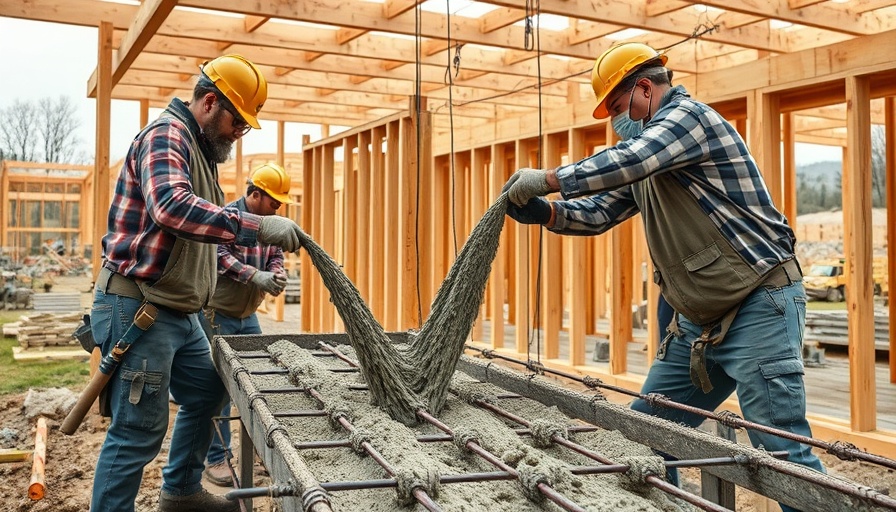
A Perfect Storm: Understanding the Concrete Industry's Struggles
As we move through 2025, the concrete industry is grappling with multiple compounding challenges that are not just reshaping project timelines but also the fundamental dynamics of stakeholder collaboration. The pressing issues include a severe skilled labor shortage, unpredictable material costs, and rising demands for sustainable practices. Let’s dig deeper into these elements and assess how contractors are adapting.
Contending with Labor Shortages: The Crux of the Challenge
The skilled labor crunch within the concrete sector isn't a newfound issue, yet its ramifications are being felt more acutely now than ever. With an aging workforce and a glaring absence of young talent stepping into the trade, contractors find their hands tied. This labor shortage directly impacts the productivity of concrete finishers, which is particularly troubling in challenging weather conditions, diverting resources and leading to frustrations. Reports reveal that multiple sites are often manned by fewer skilled workers, resulting in uneven finishes and costly rework.
Economic Pressures: Navigating Uncertainty
Beyond the labor struggles, contractors are also navigating an unpredictable economic landscape. Recent fluctuations in interest rates and impending policy shifts create an environment of caution among firms, leading many to play it safe with spending and project planning. In the face of rising tariffs and material shortages, which have caused prices to skyrocket for nearly 87% of contractors, it’s the agility to adapt that will determine the survivors in this industry. The delicate balance of maintaining a robust backlog while anticipating a slowdown adds another layer of complexity.
Innovative Solutions: How the Industry is Responding
Despite the heavy challenges, the industry has begun to take proactive steps. Contractors are increasingly adopting technologies that boost efficiency, such as digital tools that streamline project management, thereby allowing them to juggle multiple priorities effectively. Moreover, targeted upskilling of the current workforce can help mitigate the impact of the talent crunch while sustainable practices that incorporate low-carbon concrete not only address environmental pressures but also appeal to a growing market demand.
Conclusion: The Path Forward for Contractors
The concrete industry in 2025 is undoubtedly facing a perfect storm, but it's in times of adversity that resilience shines through. With a concerted effort towards smarter sourcing, tech adoption, and strategic workforce planning, contractors can not only weather this storm but potentially emerge stronger. For firms ready to embrace these changes, the future holds not just survival, but the opportunity for significant growth.
 Add Row
Add Row  Add
Add 




Write A Comment